
– OK, but what if our customers don’t like our made-up fantasy world of Osgorth ?
– We will add a bunch of historical scenarios !
– Do you really think I have time for historical research? I already spent hours writing backstory for the eleven Osgorth races !
– Nah, we will just put stuff like “Romans vs Vikings“. People love those “Greatest Warriors of all time” battles.
– OK, but what if people find that unrealistic ?
– Bah, we will throw in a Lord of the Rings battle and the nerds will forgive us for everything.
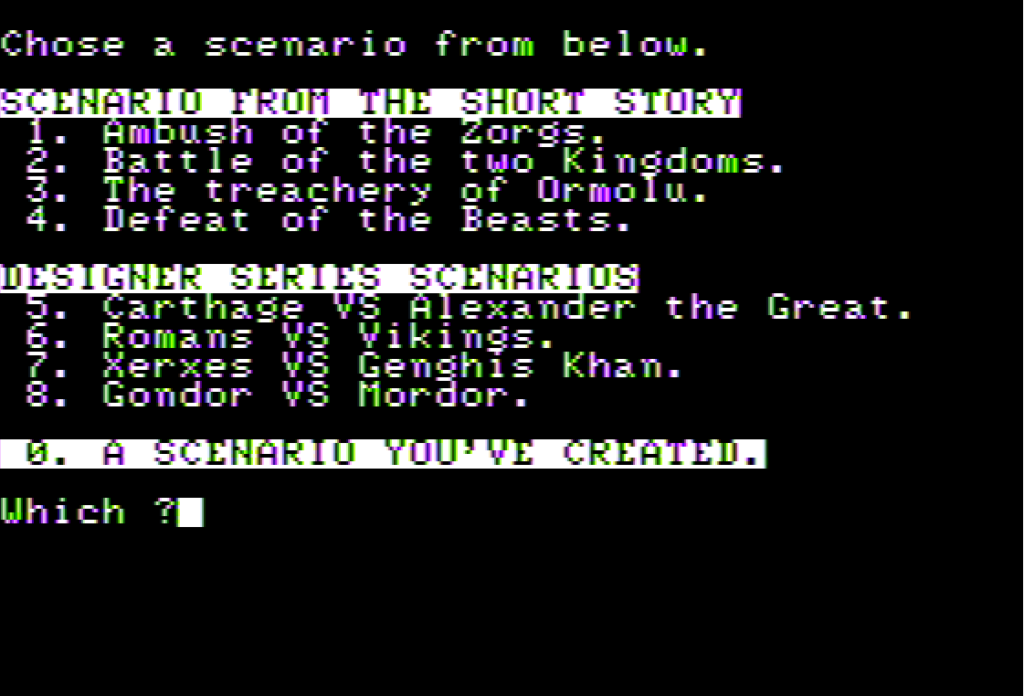
The Shattered Alliance is the first fantasy game released by SSI, and I believe the first computer fantasy wargame. It was mainly designed and programmed by the historical SSI developer John Lyon (Computer Bismarck, Computer Napoleonics and Torpedo Fire), who once again showed admirable versatility by moving from a WW2 submarine simulation to fantasy battlefields.
In The Shattered Alliance, SSI tried to create its first license, the universe of the Chronicles of Osgorth. John Lyon had ambitious plans for the world of Osgorth: “there will be two games (Battle and Campaign) for every important time period (…). The Shattered Alliance is the Battle game for the time before gunpowder“. This would not stick, and there would be no more Chronicles of Osgorth games after this one.
Another innovation is more important for my AAR: the RapidFire system. Rapidfire will mean something else for SSI starting in 1982, but for the scope of the Shattered Alliance, SSI’s RapidFire is the marketing term for the way the game culls waiting time by replacing the traditional “I play all my units, then you play all your units” by a system where units are activated depending on the time it took them to complete their last action.
For instance, if I take the movement matrix of the game :

- If light cavalry and heavy cavalry are advancing side to side, the light cavalry will advance once, then the heavy cavalry, then the light cavalry twice, then the heavy cavalry again, etc… All movements are always by one tile.
- If a heavy infantry enters some heavy hills (they offer a very high defensive value), it will not be able to attack, move or use its range weapons again for 24 time units.
The game ends when the 144th time unit clocks-in, unless the winner has already been determined.
A few commenters decided to go for the Gondor vs Mordor scenario, and commenter BrutusTrump even said “for Frodo” so I suppose it means I am fighting for Gondor!
Here are my forces for this battle :

The two units on top are elves, the short guy with an axe obviously represents a dwarf, and I can only assume that the “Extra Heavy Cavalry” at the bottom represents the Riders from Rohan. In total, two light infantry with bows, three medium infantry (one with bow), two heavy infantry, including one with 2-hand weapons (superior to anything else), and one heavy cavalry.
“Cl” represents the unit’s training from A (elite) to D (levy), “Sh” indicates that the unit uses a shield.
As for the minions of Mordor, I have a similar report for them :

The burly guys are the orcs in this scenario (that icon would represent “Zorgs” in the Osgorth universe), the rest are humans, sometimes on horses. Training is pretty poor, but they are more numerous and heavier than my forces, with a lot of ranged weapons too.
Finally, I get offered a few scenario options :
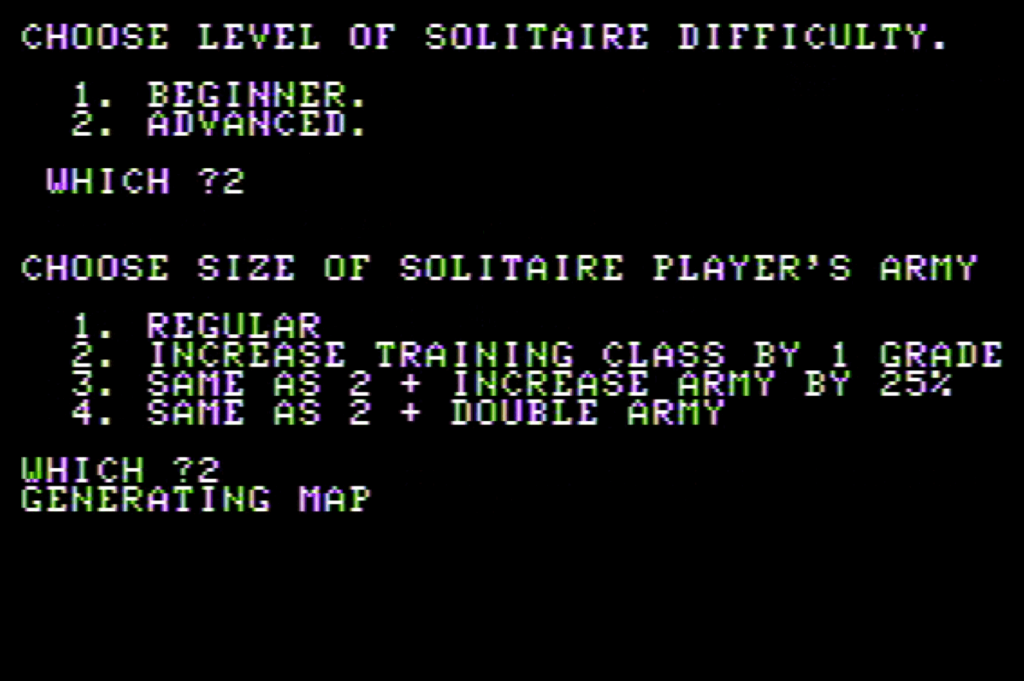
I choose to give the computer a bonus in training class, so now Mordor is not only more heavily armed and more numerous, but it is also more trained than Gondor.
The battle starts. I am given the choice between a strategic view or a tactical view. I will not use the strategic view much as it would make an ugly after action report, but it gives a nice overview of the general situation – pretty important at the beginning of a battle.
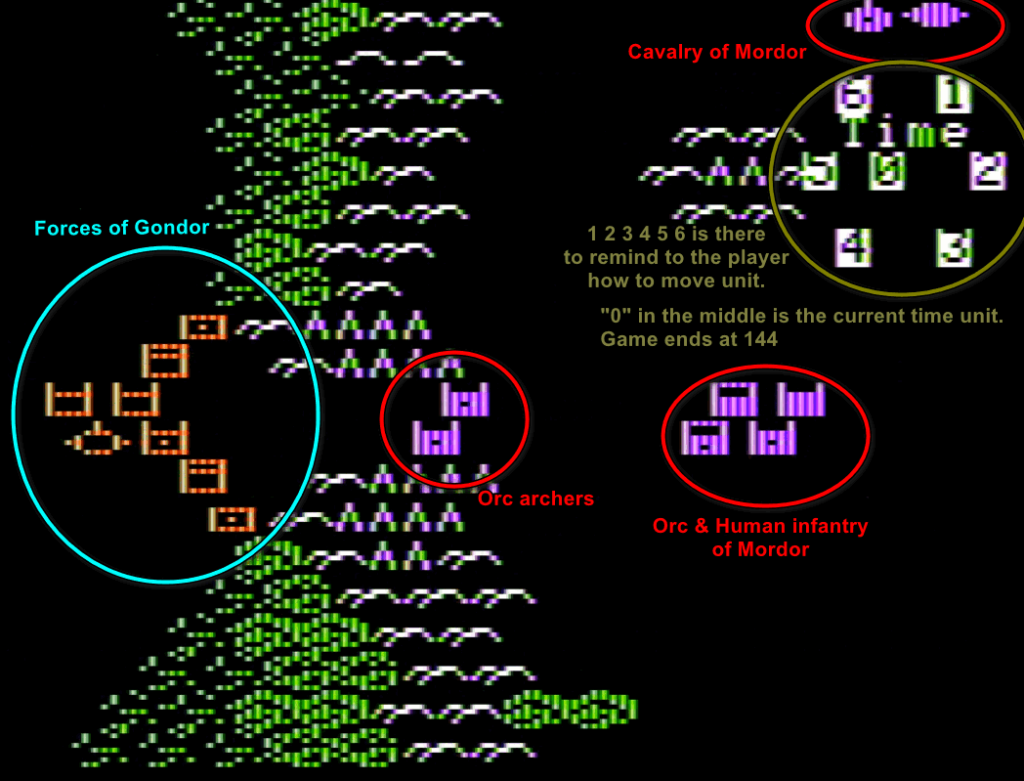
Well, the situation is interesting. A narrow pass (presumably one of the entrances to Mordor) is guarded by Orc medium infantry with bows. The rest of the infantry is a bit behind, and the cavalry is in the top-right corner – probably representing some sort of reaction force.
My strategy is therefore pretty clear : assault the orc archers as soon as possible, before they can be supported by the rest of Sauron’s minions, then take position in the hills and mountains overlooking the Mordorian plains – those hills and mountains will give me a very significant combat bonus.
Moving now to tactical view :
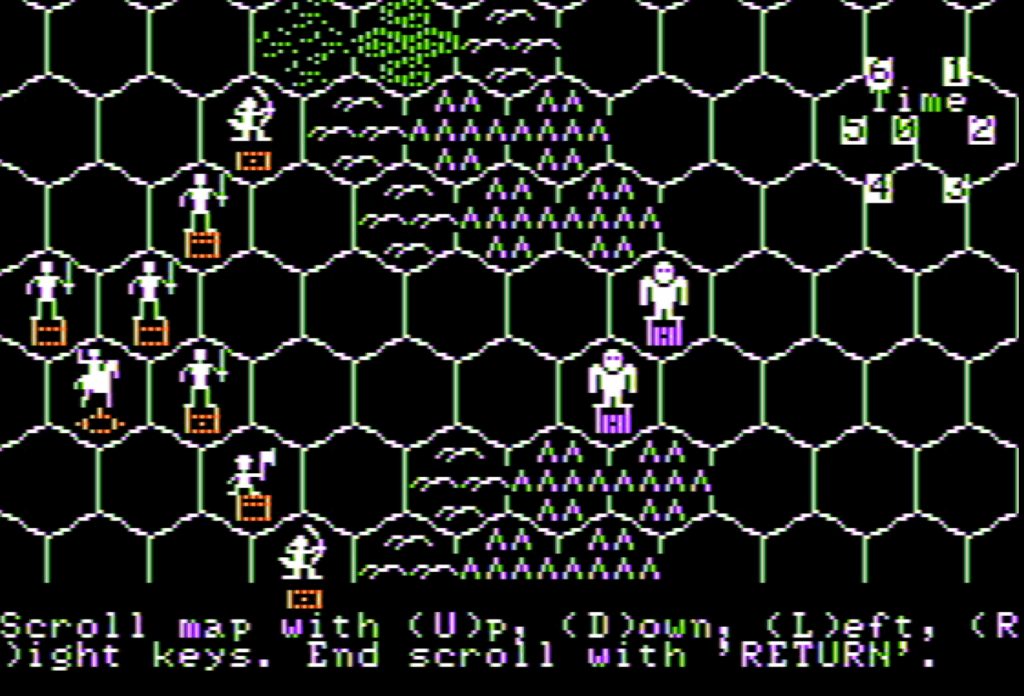
Movements are a bit tricky, and it takes some time to get used to the RapidFire ruleset. Just like in Computer Conflict, I cannot move my units in the order I want, and my infantry initially blocks my cavalry. After some time, I open a passage for my cavalry.
Meanwhile, my archers approach the orcs. They are immediately under fire by the orcs, but every time they are attacked they can immediately shoot back. The orcs are more numerous, the elves are better marksmen, so overall the losses are fairly even, and limited in number.
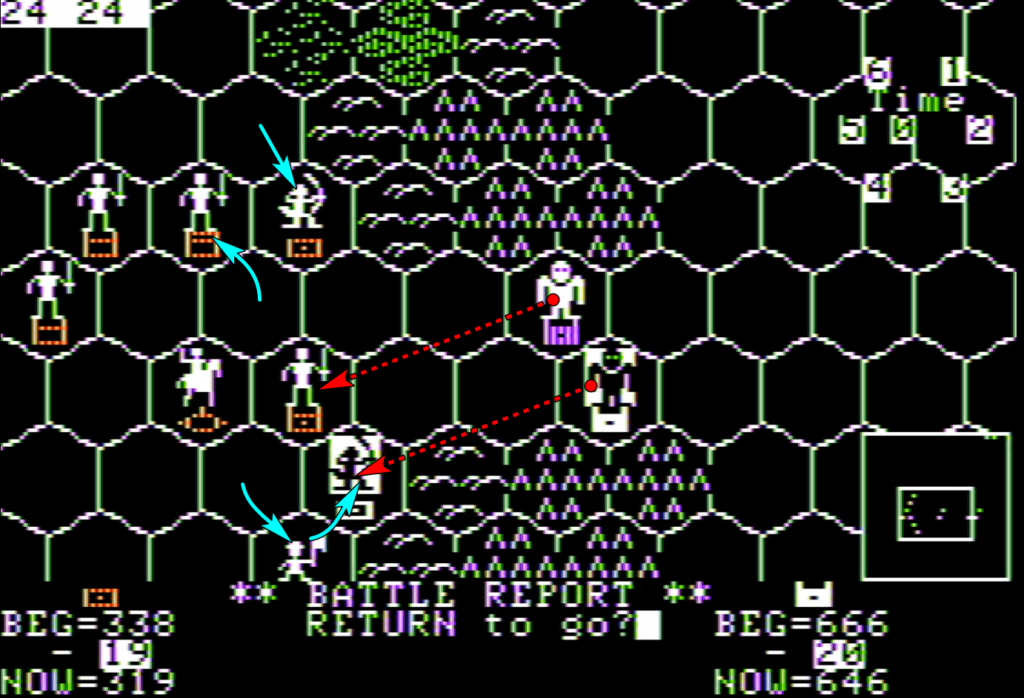
Eventually I can push my cavalry to contact – on open terrain my cavalry is so fast it gets to move twice for every action the orcs take.
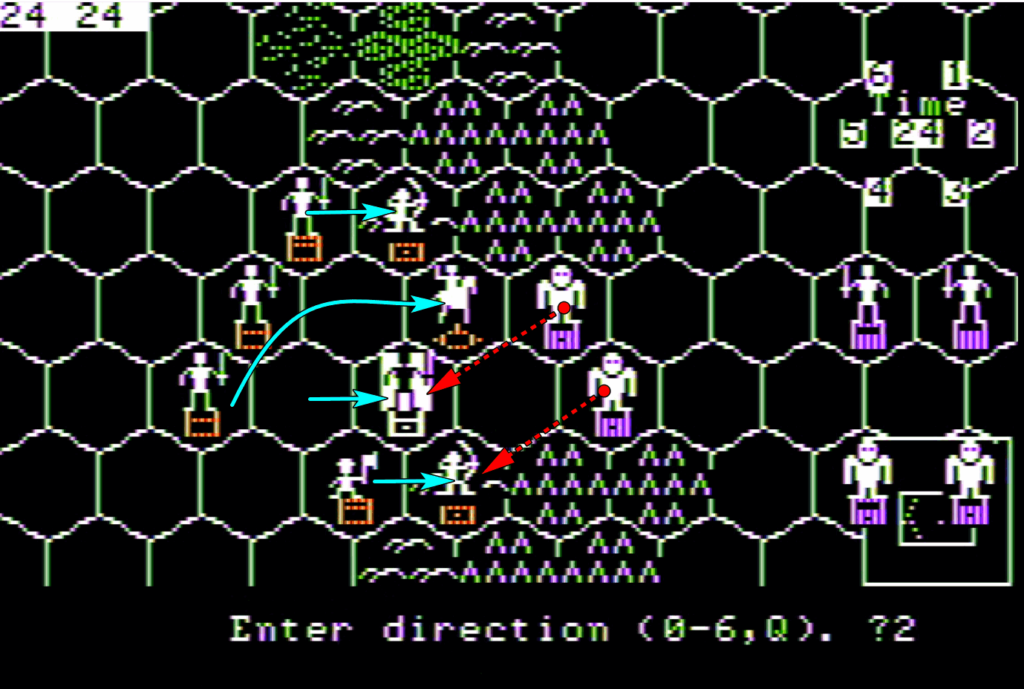
Units can shoot on the move, so the Orcs try a bit of a Parthian retreat. Fortunately for me, they are on foot and their pursuers are on horseback, so they cannot retreat too far – and my cavalry can attack them. I want this first blow to be decisive, so I also cast the spell “Edge Enhancer” on my cavalry, using up all the magic points available for that unit.

I won’t detail yet how combat resolution works in the Shattered Alliance – it is not trivial. Suffice to say that super heavy cavalry charging with lance and magic support against unshielded medium infantry in open ground is not great for said infantry. Consequently :

One of the two groups of orc archers is culled down quite a bit, for negligible losses on my side.
I also try to advance the dwarves – they have a racial bonus against orcs – but dwarves are not faster than orcs, so the orc archers can shoot and retreat just as fast as the dwarves advance.
The Mordorian general finally pulls back his damaged orc unit, and brings infantry in contact with my cavalry.

The archers mostly escaped me, but they cannot shoot over the heads of their comrades, so as an immediate threat they are now irrelevant. I am more frustrated by the fact that I have not fully crossed the pass and already there is melee infantry on the other side.
I pull back my cavalry in reserve, it is too good to waste against powerful enemy two-handers, and start to deploy the rest of my force on the flank, through the mountains.
The humans attack my dwarves, and this time they are the ones who invest magic to give themselves an edge in combat.
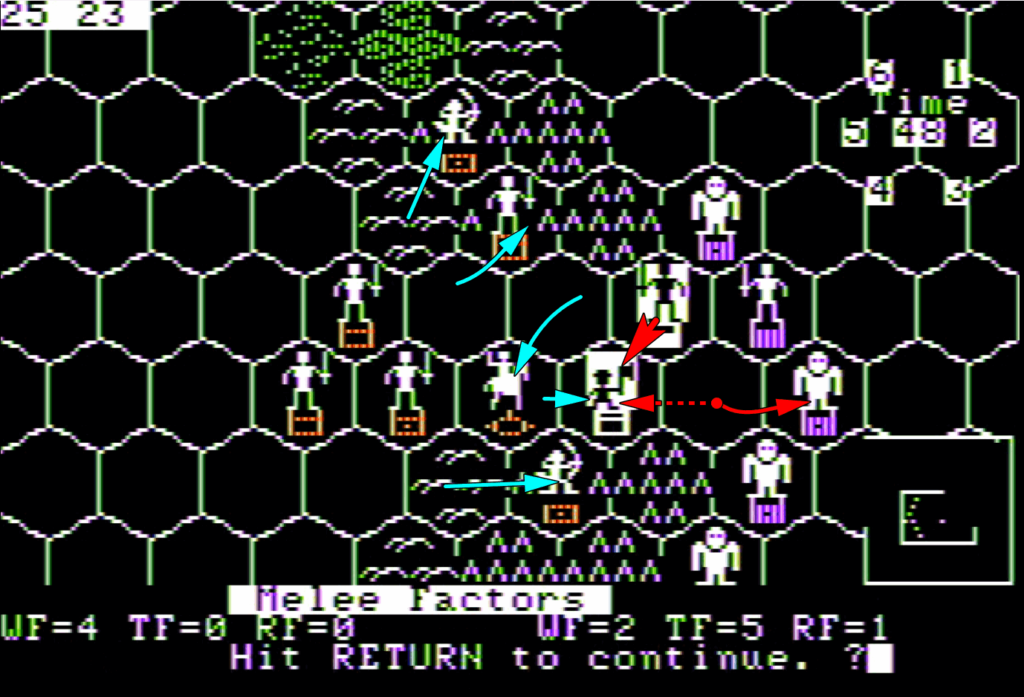
My dwarves defend well, but one-quarter of them fall dead in the melee. My second-best melee unit has lost its edge.

I could try to pull back and attack on a wide front, but checking the strategic situation, the enemy cavalry is almost there – I need to keep pushing!
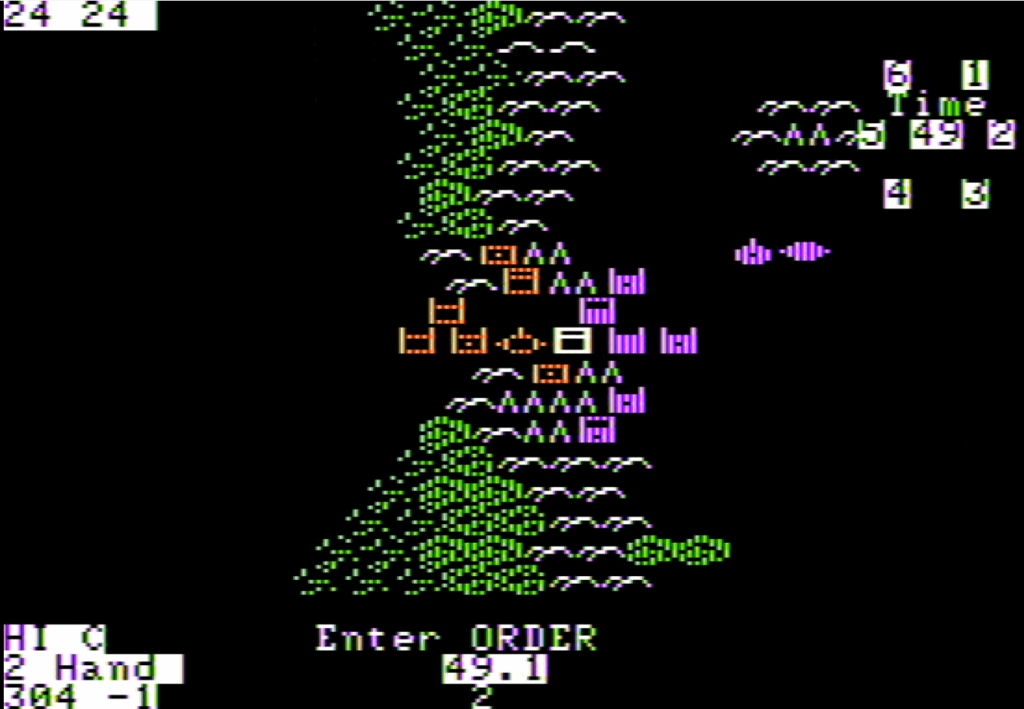
I move my dwarves South to the mountains for protection. Sauron’s forces follow them, and my dwarves register more losses!
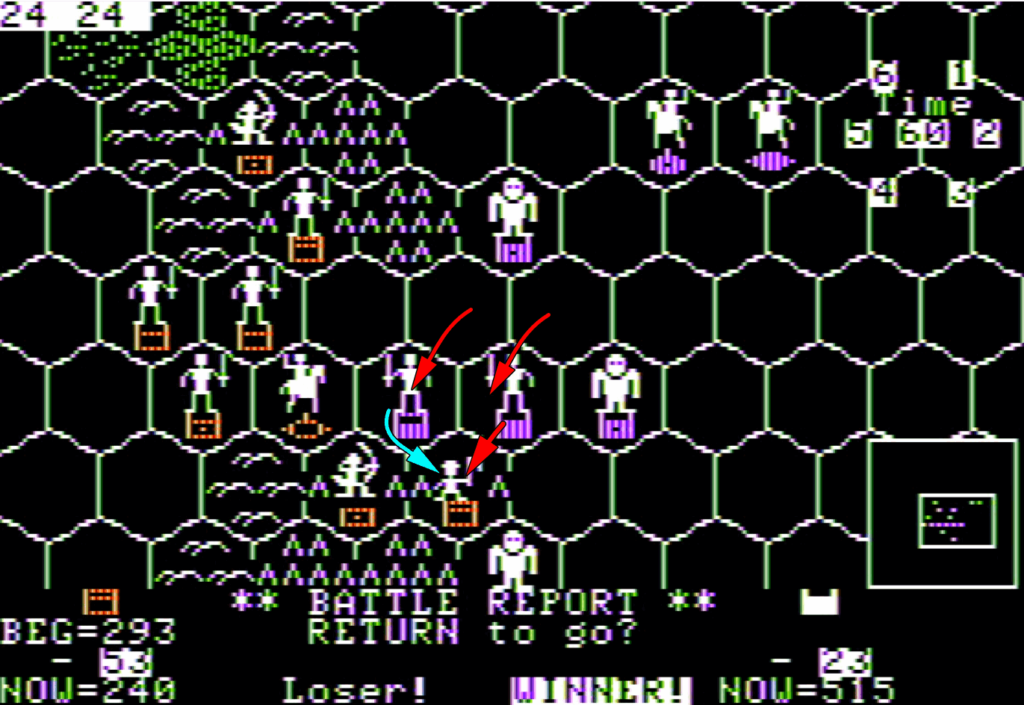
But by doing this, Sauron exposes one of his infantry units, which can be surrounded and attacked from all sides. Units don’t get direct advantage from surrounding their targets, but as the victim loses soldiers it is less and less able to fend off its opponents :
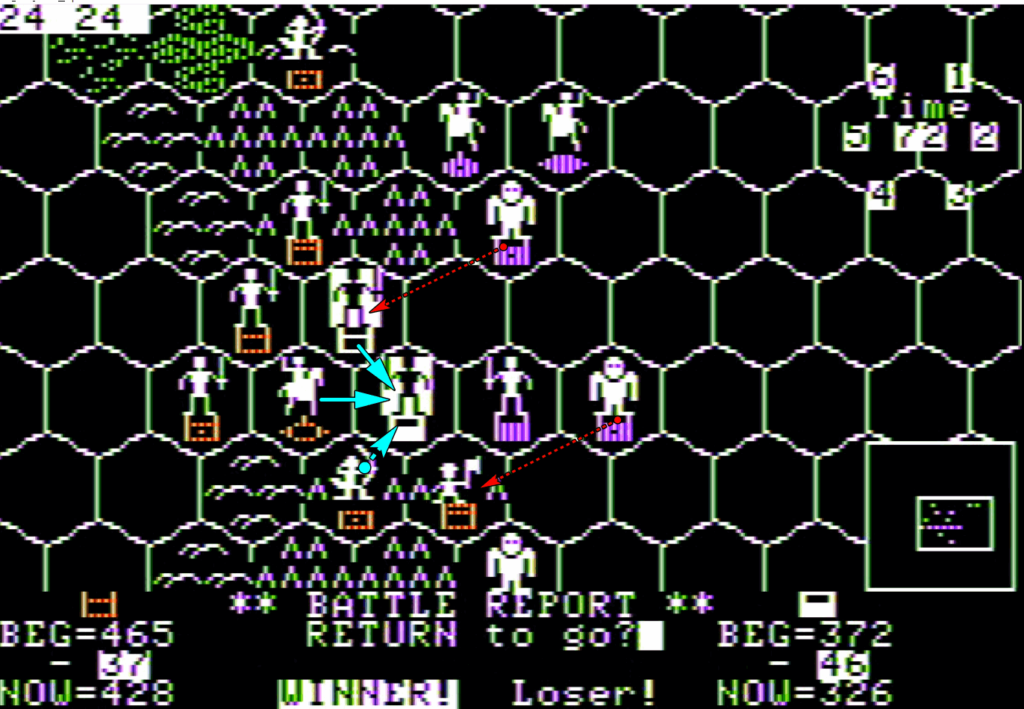
Until a final cavalry attack routs them!
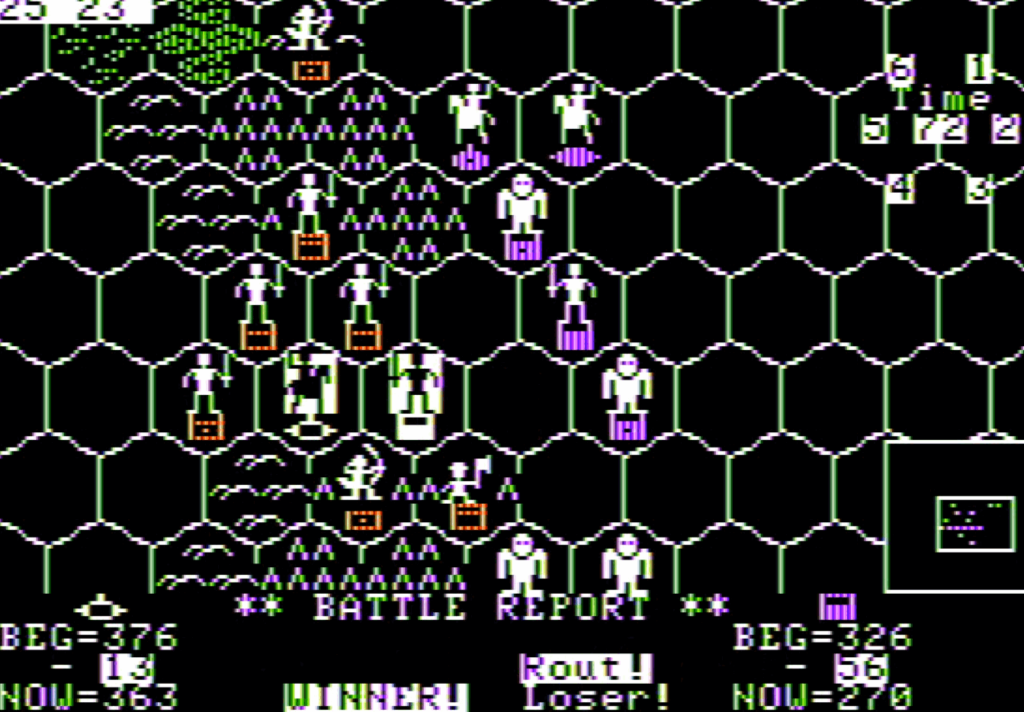
In Shattered Alliance, morale is absolutely key, and one unit panicking may very well spread its panic to the rest of the army. Breaking that first unit gives me a decisive advantage!
While my cavalry is in (automatic, uncontrollable) pursuit, the enemy cavalry attacks my archers that had crossed through the mountains and carelessly positioned themselves in some hills in the North :

The damage is very high, but at least my elves had attracted the cavalry away from the pass, allowing me to further exploit my advantage in the center!
My dwarves use magic to strengthen their attack against the orcs facing them, but they had received so many losses that they refused to move, wasting my magic :
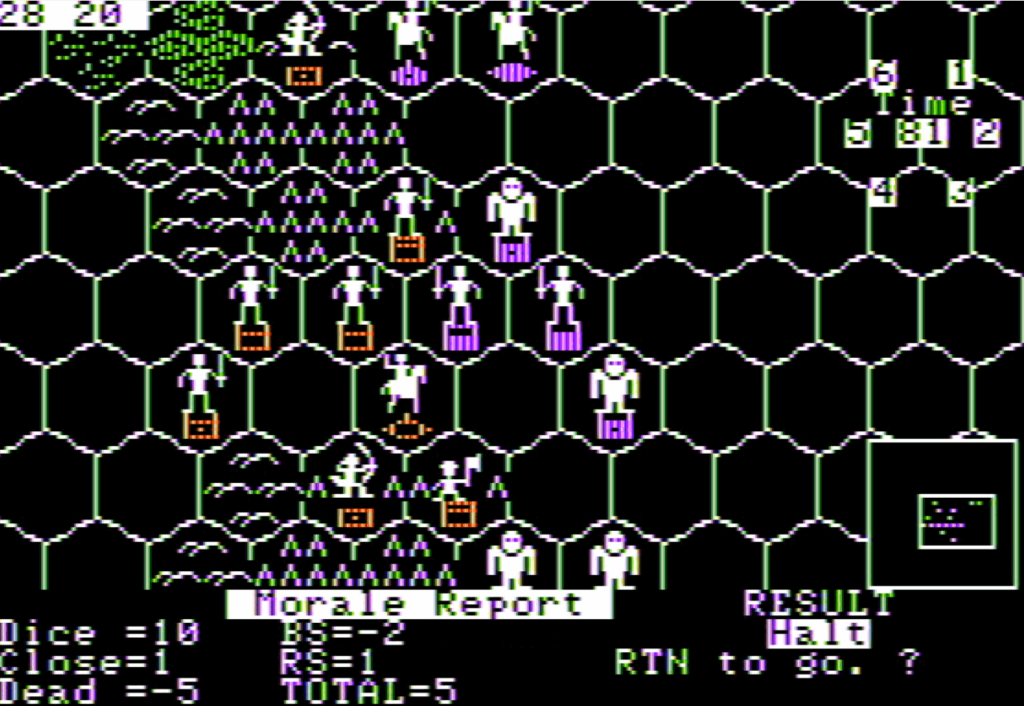
On the other hand, panic spread among the enemy lines. The orcs in the back, who had been badly mauled earlier in the battle by my cavalry, see humans running in panic in their direction, and decide they have no reason to stick around for Sauron. Without me doing anything directly, they rout!

Victory is just within grasp, provided my dwarves in the South and archers in the North don’t trigger a panic. Thankfully, I manage to move them away from the frontline in good order.
My cavalry charges through the gap, badly damaging the second orc archer group!

The remaining Mordorian hostile human infantry is now unsupported. I burst out of the pass and surround them, helped in this by the fact that the enemy cavalry is not doing anything remotely useful to Sauron. With the help of some magic, I inflict devastating damage to that unit :
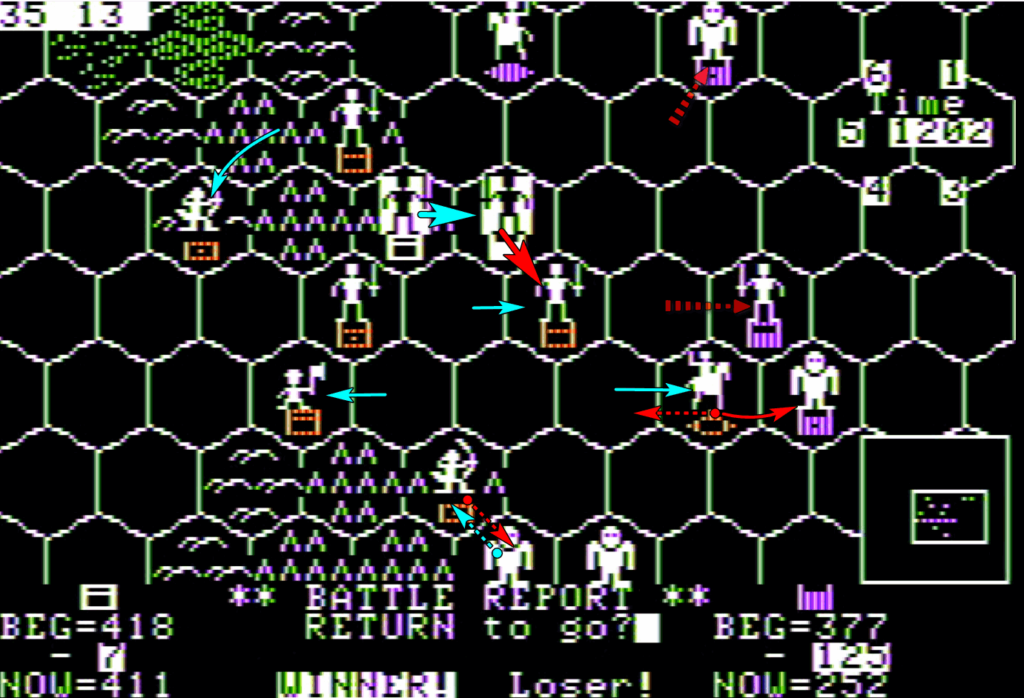
Those humans fight almost until the end, but at that point they are overwhelmed :
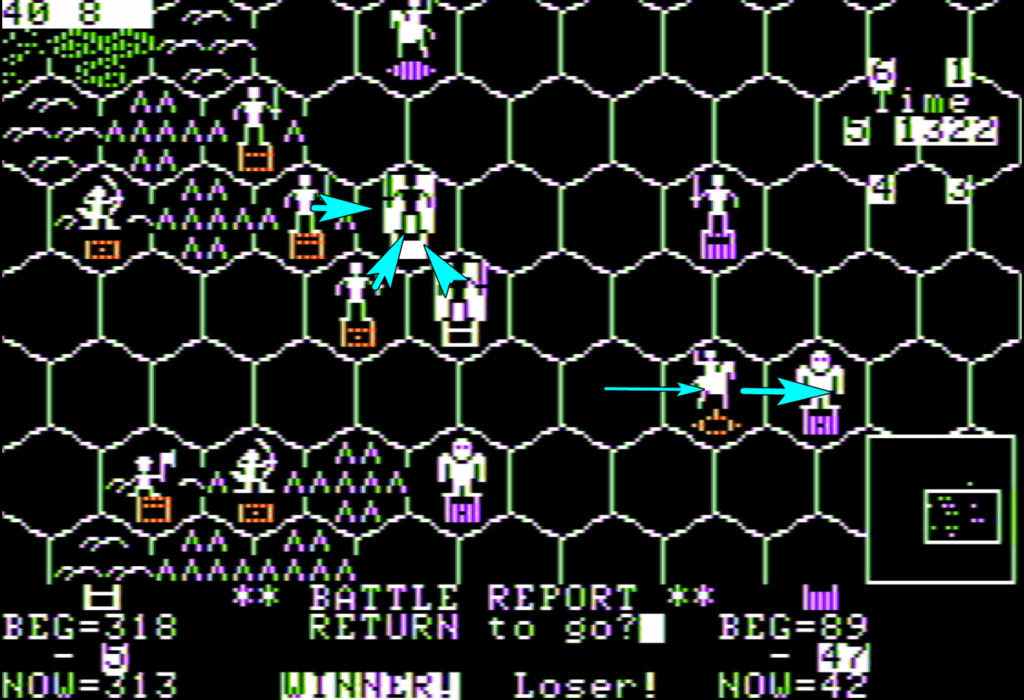
And finally, the unit is broken. They held almost to the last man.

This tragedy is witnessed by some of the remaining orcs, who realize that they could be next, even though they have almost not seen combat so far.
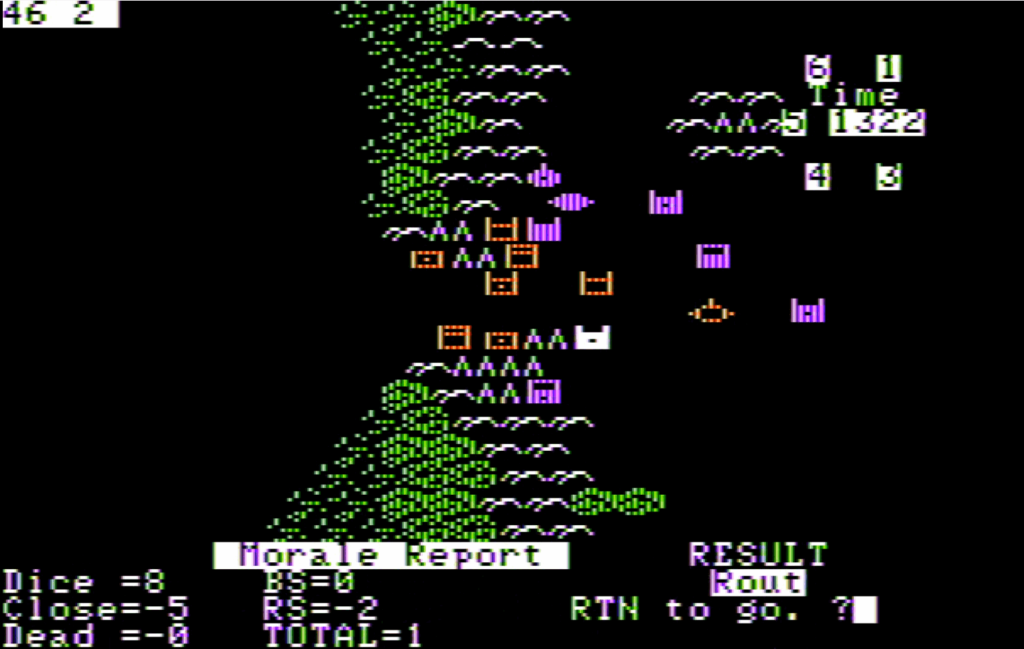
With this final rout, the “army morale” of the Mordor army reaches zero and Sauron has to retreat :

This was a double victory for humankind: Mordor had been defeated, and most of the losses had been taken by the elves and by the dwarves!
This was short, but the Shattered Alliance battles are indeed short given they feature a limited number of units, and that once some units start running away, the rest follows quickly. But more about this in the upcoming Rating & Review.